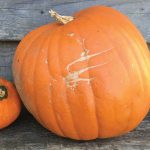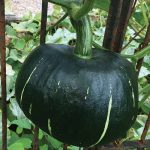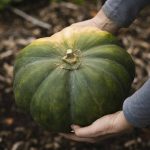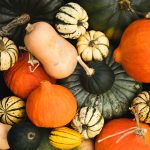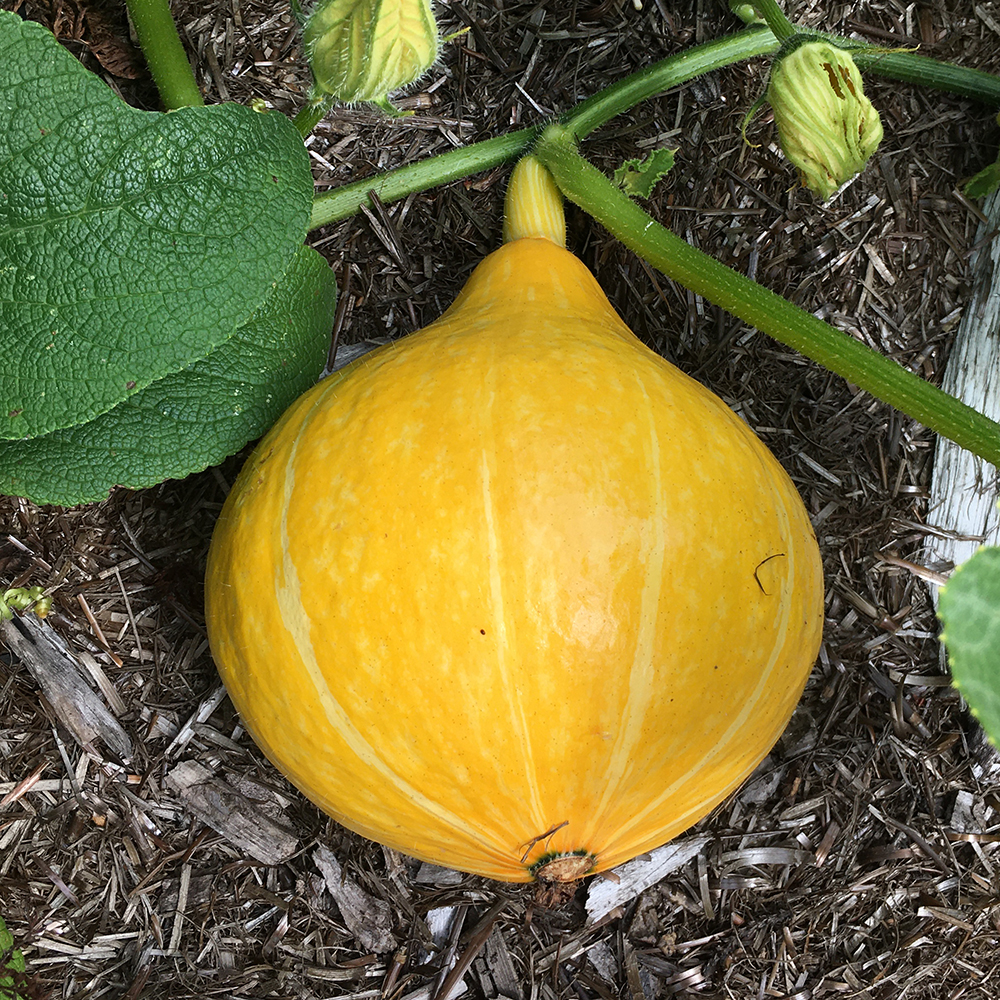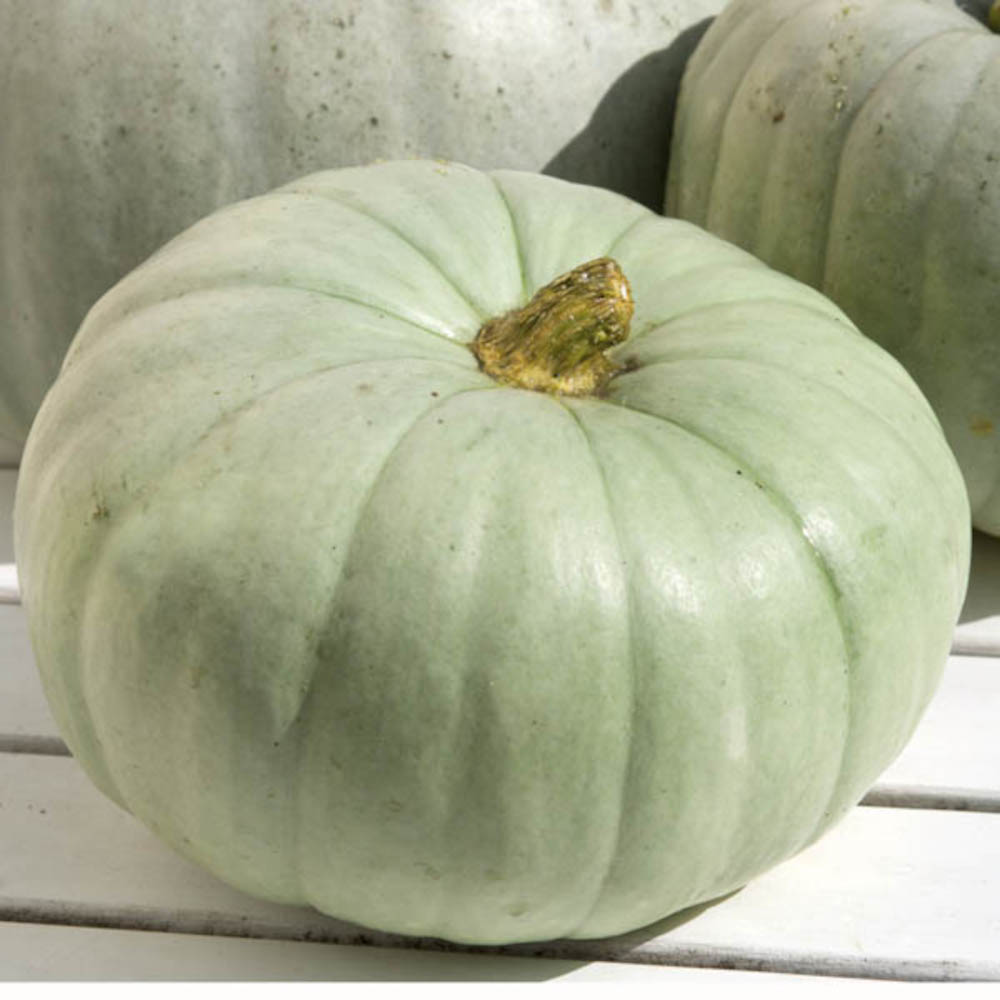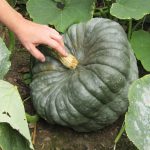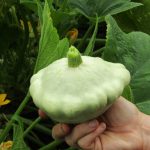- Pumpkin fruits are usually ready to harvest in October, be sure to harvest them before the first frosts. To check that they are ripe, try pushing your thumbnail through the skin – it should be tough and almost impenetrable. The stalk that holds the pumpkin/squash to the main stem will also have turned brown and dry.
- As long as they are mature when harvested, winter squash and pumpkins will store well in the kitchen at room temperature for several weeks (sometimes months!)
How to grow... Pumpkins/Winter Squash
Rocket Growing Guides
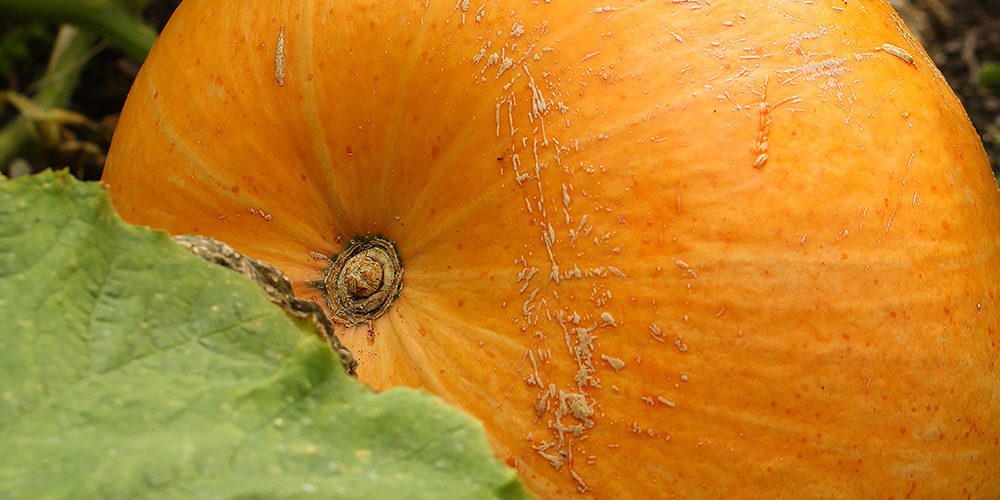
Great for growing with children, pumpkins are unbelievably well behaved and require minimal effort. Winter Squash are very easy to grow and require hardly any effort as well. You pop them in the ground and they just get on and do their thing, ready for you to harvest in the autumn. They do need a fair bit of space though.
- Pumpkin & Winter Squash Growing Guide
How to Plant Pumpkins and Winter Squash
- Choose a sunny site with fertile, moisture-retentive soil
- If you receive your plants early in the season, while nights are still cold or there is a risk of frost, it is best to temporarily plant in the punnets that they arrive in, or in small pots, and keep them on a sunny windowsill or in a greenhouse until the weather warms up a little.
- Plant 1m apart in raised beds/traditional veg patch, or 1 plant to a large, deep pot/planter that allows plenty of space for the roots (approx 30cm x 30cm – straight edged pots are better than narrow at the bottom)
- Most varieties can be grown up a sturdy trellis or fence to save space. Otherwise, allow them to sprawl on the ground.
- Water thoroughly once planted
How to Grow Pumpkins and Winter Squash
- Keep these plants well watered during the summer – try to avoid the soil getting too dry in between waterings.
- Don’t plant out until risk of frost has passed. Make sure plants are sheltered from strong cold winds in spring – you could cover plants with a cloche in the early days until the weather warms up and settles.
- The male flowers will come through first. The female flowers which bear fruit will come in a bit later with warmer weather.
- Plants will benefit from a fortnightly or monthly liquid feed once fruits start to form, especially if grown in pots.
- Prune out any leaves that are affected with mildew (see below)
- If you want to grow larger pumpkins for carving, prune out fruits once you have 4 or 5 on the plant – this will concentrate energy into growing the existing fruits.
- Don’t let the fruits sit on soggy soil – carefully place some straw underneath the fruits, or a flat stone, as doing this will keep the underside of the fruits drier and prevent them from rotting.
Common Problems with Pumpkins and Winter Squash
- Powdery Mildew – squashes are often affected by mildew, particularly towards the end of the season as the weather turns cooler and damper. Cut off the worst affected leaves to allow the new healthy leaves to come through and you should be able to keep the plant reasonably healthy until late summer.
- No female flowers/fruits appearing – this is usually due to cool weather or lack of sunshine (or other conditions like drought or strong winds.) Early in the season, immature plants will produce male flowers, and female flowers arrive a little later with warmer temperatures. By late June/early July you should start to see female flowers if conditions are good.
- Mice/Rats/Voles – if you see any teeth marks in the fruits, this is likely to be a rodent of some description..!
- Yellow leaves – this is usually a sign of nutrient deficiency. Make sure plants are well watered, and apply a liquid feed.

